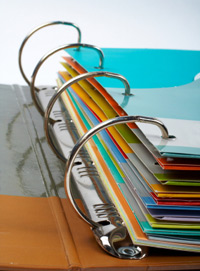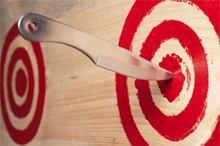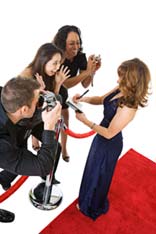Study concludes Face-to-Face Trade Shows Capture Attention Best
As companies look to find ways to make every marketing dollar work harder, some trade show exhibitors have tried to reduce expenses by participating in virtual trade shows. Initial results have shown that virtual trade shows generate few leads and a higher percentage of unqualified leads. Now a report from Cornell University has started to shed some light on the behavioral effect of live vs. virtual meetings.
 The Center for Hospitality Research at Cornell University recently released a report, The Future of Meetings: The Case or Face to Face, that concluded, “The intangibles of face-to-face meetings can be more potent than virtual and online technology when it comes to capturing the imaginations and enthusiasm of attendees.”
The Center for Hospitality Research at Cornell University recently released a report, The Future of Meetings: The Case or Face to Face, that concluded, “The intangibles of face-to-face meetings can be more potent than virtual and online technology when it comes to capturing the imaginations and enthusiasm of attendees.”
The study authors found that “real” events hold the attention of attendees and allow the formation of valuable personal relationships making trade shows, conventions and corporate events well worth the investment.
The report stated, “Large face-to-face meetings and events are the best option when a business or organization needs to capture attention necessary for a new or different strategy, relationship or product.”
The report concluded that face-to-face events are the best option for:
- Capturing attention: Attendees have fewer distractions on the exhibit floor and are less tempted to check e-mails or do other multi-tasking chores than they would when taking part in a virtual event.
- Inspiring a positive emotional climate: Attendees like to associate with their peers. Even people working on virtual technology attend physical conferences.
- Networking and relationship building: Socializing and making new friends in an industry can have great appeal. Experts predict informal networks of people within an organization that are bonded by a group loyalty will become even more important than traditional chains of command as the economy recovers.
The entire report can be found at Cornell’s Center for Hospitality Research website.
Know your Trade Show Terms
It’s hard to walk the walk, when you can’t talk the “talk” of the trade show world. We’re making it easier on you by creating a free downloadable glossary of terms, containing all the terms you need to know to look like a pro at your next trade show.
 Here are just a few of trade show terms you’ll need to know to feel and sound like a real trade show insider:
Here are just a few of trade show terms you’ll need to know to feel and sound like a real trade show insider:
Advanced Order- An order for show services sent to the contractor before actual move in.
Baffle- The partition to control light, air, sound or traffic flow.
Bill of Lading- Document or form listing goods to be shipped.
Blanket Wrap- Non-crated freight shipped via van line covered in protective blankets or padding.
Bone Yard- Equipment storage area at an exhibition hall.
Chevron- Type of cloth used for backdrops.
Consignee- The person to whom goods are shipped.
Corkage- The charge placed on beer, liquor, and win brought into the facility but purchased elsewhere. The charge sometimes includes glassware, ice, and mixers.
C.W.T.- Hundredweight- A measurement of the weight of exhibit freight. Usually 100 lbs.
Drayage- The unloading of your shipment at an exhibit hall, transporting it to your booth, storing and returning your empty crates and cartons, and reloading your shipment at the close of the show.
Duplex Outlet- Double electrical outlet.
Floater- Worker(s) used by a foreman to help assigned labor for short periods of time.
Foam Core- Lightweight material with a Styrofoam center used for signs, decorating, and exhibit construction.
Four-Hour Call- Minimum work period for which union labor must be paid.
I & D- Install and dismantle.
Infringement- Use of floor space outside exclusive booth area.
Marshalling Yard- Check-in area for trucks delivering exhibit material.
Pegboard panel- Framed panel of perforated hardboard. Pipe and
Drape- Tubing with drapes that separate exhibit booths.
Pro-Number- Number assigned by the freight forwarders to a single shipment; used in all cases where reference is made to the shipment.
Staging Area- Area adjacent to main event area for setup, dismantling, and temporary storage.
Stanchions- Decorative posts that hold markers or flags to define traffic areas. Ropes or chains may be attached.
Union Steward- On-site union official.
WARP, WEFT, & BIAS- The three ways fabric stretches, length, width and diagonal.
Yaw- Key stoning effect on a projection.
But wait, there’s more. For a complete list of terms to know, download the FREE Glossary of Trade Show Exhibit Terms!
Developing an Effective Tradeshow Marketing Strategy
Establishing an effective marketing strategy for a trade show is essential to converting the money spent on exhibits, booth space, and the travel expenses to increased sales. Companies must plan and begin executing their trade show marketing strategy before the show begins and continue after the tradeshow until the last lead has been followed up.
 Once a strategy has been devised and bought into by upper management; it’s time to get a plan in place to deploy it. Make sure that your marketing goals are easily measurable so you can easily assess the effectiveness of your plan after the show and determine the role trade shows will play in your future marketing plans.
Once a strategy has been devised and bought into by upper management; it’s time to get a plan in place to deploy it. Make sure that your marketing goals are easily measurable so you can easily assess the effectiveness of your plan after the show and determine the role trade shows will play in your future marketing plans.
Here are a few things that can help you develop and deploy an effective trade show marketing strategy so that you can be the “talk of the show.”
Before the show
Trade show organizers will supply you with a list of ppre-registeredattendees. Use this list to contact registrants via phone calls, written invitations to promotional events at the show, direct mail, and emails. A teaser that gives attendees a reason to stop by your booth (free giveaways, enticing entertainment, etc.) can help boost traffic. Well before the show, be sure and add sections to your website such as forums, event calendars, and newsletters to reach a large portion of customers and leads.
During the show
These marketing activities include live demos, in-booth entertainment or attractions, audiovisual programs, tradeshow giveaways, and free food and beverages, if permitted.
Effective marketing during the show is contingent upon having a well-trained and professional staff manning your booth. Getting attendees to stop by the booth will only get you so far. After that, it’s up to your employees to welcome them, introduce themselves, and give them a quick overview of your company and its products or services. Be sure that booth workers take notes and obtain contact information along with information specific to that person that might come in handy when contacting them after the show.
After the show
This is where many companies fall short. If you want to convert sales leads into actual sales, this needs to be an essential part of your marketing plan. Thanking attendees and following up with them is important if you want them as future customers. Follow up within a week of the show by sending a personalized note, along with any marketing material you deem appropriate for that particular prospect.
In the weeks following the show, attendees will be besieged with emails, sales collateral, and sales pitches via social networking sites from exhibitors. Set your company apart from the sea of competitors by making personal phone calls to promising sales prospects. This extra effort confirms your company’s commitment to service and establishes a pathway to building a relationship with a future customer.
All these marketing strategies should be built around establishing and reinforcing your company’s commitment to quality and customer care. Implementing a trade show marketing plan that focuses on relationship management and personalized attention to prospects as well as current customers will go a long way towards growing your business and increasing sales.
Trade Show Exhibit Strategies: Be the “Talk of the Show”
Become the “Talk of the Trade Show”
Every show has that one exhibitor that everyone talks about – the “Talk of the Show”. It is not always the biggest or most expensive booth, but it is often the booth that has the best marketing idea. Here are some ways that unlikely exhibitors became the “Talk of the Show”:
- Rare autographed merchandise that appeals to the target customer.
Pick the right item and the right celebrity for your target customer and, if used as part of a themed exhibit and contest, your exhibit could be a show standout. Select a rare, one-of-a-kind item to be used in a prize drawing, add some related, less expensive items to make the contest more exciting. Then come up with a themed contest and exhibit to make the entire concept and booth an entertainment event. - Film a live show and make attendee the stars.
Most people love to see themselves on camera. Set up a Live Cam and Web Cam from the show floor and put on a show. Broadcast your “show” on monitors so people can watch their colleagues be stars. At one trade show, an exhibitor created a talk show set and broadcast live at the trade show and online. They had a “band” with a couple of musicians and recorded music, a show host and invited attendees to be their guests on the show. Guests could be interviewed about the product or sing favorite songs with modified lyrics that integrated the featured product. The program got the highest ratings at this show. - A housewares magic act.
 Many exhibitors hire magicians or entertainers to attract exhibit traffic, but every now and then a company comes up with an act that breaks out of the ordinary. A ceramic knife manufacturer took a knife throwing act to a new level – pitting their ceramic knives against the competition. The knife throwing act demonstrated that while some ceramic knives shattered easily, the company’s knives were truly shatter resistant and could survive even knife throwing.
Many exhibitors hire magicians or entertainers to attract exhibit traffic, but every now and then a company comes up with an act that breaks out of the ordinary. A ceramic knife manufacturer took a knife throwing act to a new level – pitting their ceramic knives against the competition. The knife throwing act demonstrated that while some ceramic knives shattered easily, the company’s knives were truly shatter resistant and could survive even knife throwing. - Extreme Demos.
If you have an extreme product, consider having an extreme demo. At one trade show, Taser offered to shock attendees, and hundreds took up the offer and ended up on the floor. - Great food.
If you are exhibiting at a non-food show, think about offering a crowd-pleasing, made-to-order food item. The trick is to avoid the commonly offered freshly baked cookies and coffee drinks. For example, at a tech show, Fios, Inc. of Portland offered smoothies – and had people lined up for hours. While attendees waited for their smoothie, the booth staff scanned their badges and introduced attendees to Fios e-discovery legal support services and software.
There are many ways to attract attention – prizes, demos, entertainers and free food are common – but when done in an unexpected way, it can make your booth the trade show exhibit that everyone talks about.
Shine Like a Star at Your Trade Show by Scheduling a Book Signing
Schedule a book signing at your next trade show
 Our clients are constantly looking for new ways to drive more traffic to their trade show exhibit. One very effective method to accomplish this is to schedule a book signing.
Our clients are constantly looking for new ways to drive more traffic to their trade show exhibit. One very effective method to accomplish this is to schedule a book signing.
Most industries have some well-recognized experts who have written books or white papers on subjects directly related to the show and to exhibitors’ products or services. The opportunity to meet and talk to one of these experts as well as walk away with an autographed copy of a book can be a very compelling attraction.
This type of promotion works particularly well in medical, scientific and technical shows. The authors are very often participating in the show as speakers or presenters so the cost of having them in a booth can be quite reasonable. They are often willing to work the booth for just the cost of the books.
Be sure to hype the book signing with preshow emails to attendees. Develop a lead card that gathers all of the information necessary to turn the lead into a sale. The attendees should be required to complete the lead card in order to receive the book.
Consider controlling traffic by making it a “by invitation only” event in your pre-show promotions.
Archives
- July 2021
- June 2021
- May 2021
- April 2021
- October 2018
- September 2018
- August 2018
- July 2018
- June 2018
- May 2018
- April 2018
- March 2018
- February 2018
- January 2018
- December 2017
- November 2017
- October 2017
- September 2017
- August 2017
- July 2017
- June 2017
- May 2017
- April 2017
- March 2017
- February 2017
- January 2017
- December 2016
- November 2016
- October 2016
- September 2016
- August 2016
- July 2016
- June 2016
- May 2016
- April 2016
- March 2016
